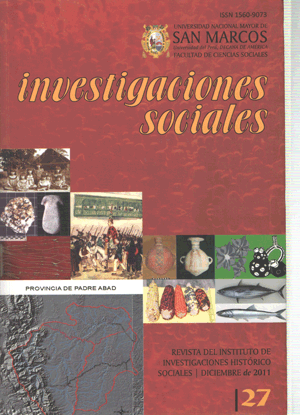Ayni and Minka, two collective forms of Work pre-Chavin societies
DOI:
https://doi.org/10.15381/is.v15i27.7659Keywords:
ayni, minka, Las Haldas, Cardal, Sechín, La Galgada, Pacopampa.Abstract
This article shows the origins of ayni and minka, autochthonous forms of communal work own of Andean region that begun since Late Archaic Period and Formative, between 3200 and 1800 b.C. in four ceremonial centers of central and north coast and north highland. It is done a comparative study between two groups: one is Las Haldas temple and Cardal site that had used shicras (vegetal fiber) and small stones, nonetheless the second formed by La Galgada and Pacopampa, in Ancash and Cajamarca departments, respectively, their architectures describe the use of great stones, terraces and strong structures like indicators minka, realized by several human groups in competence. Ayni of the central coast means reciprocity and work of societies without classes like fishermen and crayfish-men; by other hand minka is related to herders, farmers, stone-men-work and specialized groups like beginning of the social classes.Downloads
Published
Issue
Section
License
Copyright (c) 2011 Alfredo Jose Altamirano Enciso, Alberto Bueno Mendoza

This work is licensed under a Creative Commons Attribution-NonCommercial-ShareAlike 4.0 International License.
AUTHORS RETAIN THEIR RIGHTS:
a. Authors retain their trade mark rights and patent, and also on any process or procedure described in the article.
b. Authors retain their right to share, copy, distribute, perform and publicly communicate their article (eg, to place their article in an institutional repository or publish it in a book), with an acknowledgment of its initial publication in Investigaciones Sociales.
c. Authors retain theirs right to make a subsequent publication of their work, to use the article or any part thereof (eg a compilation of his papers, lecture notes, thesis, or a book), always indicating the source of publication (the originator of the work, journal, volume, number and date).













